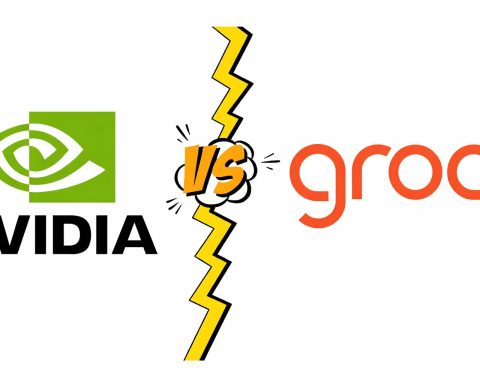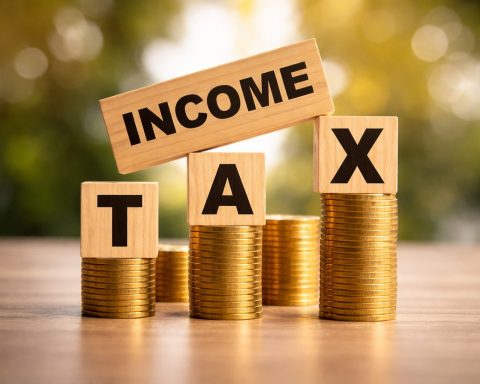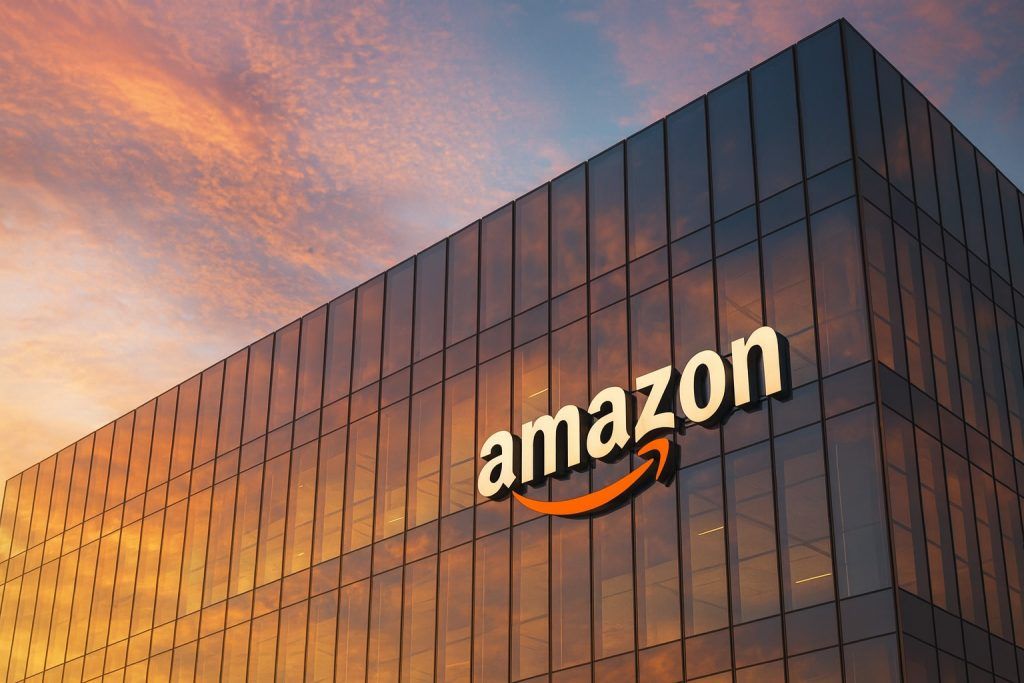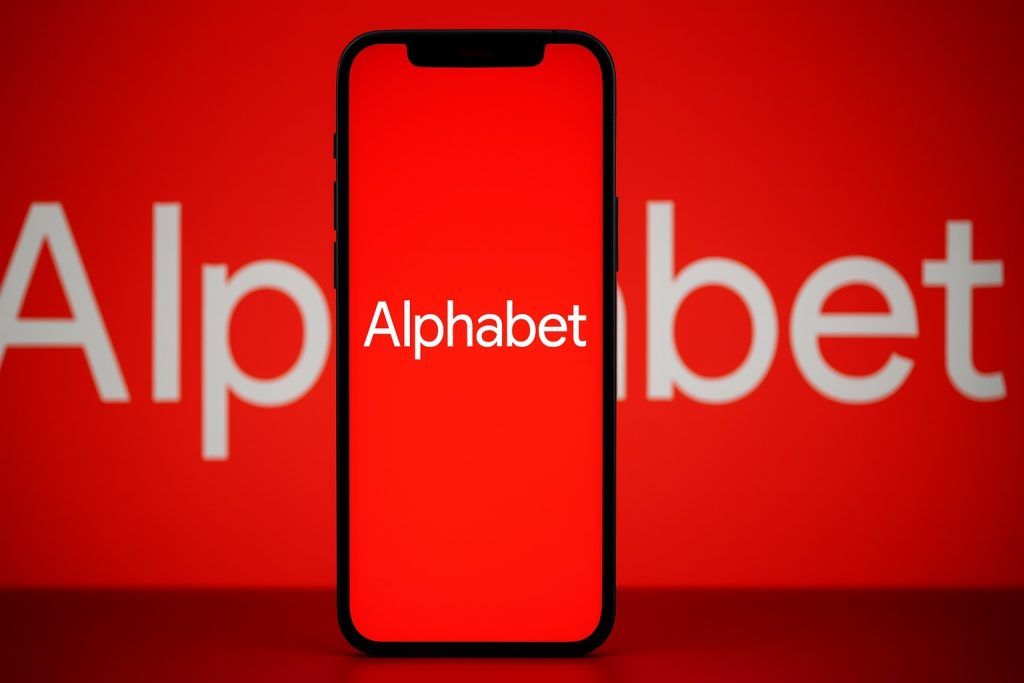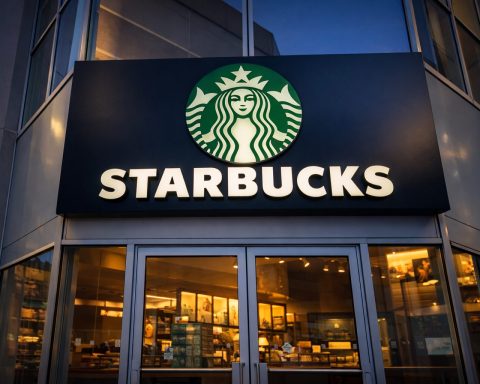- AAPL stock soars to record highs: Apple’s shares hit all-time highs around $262–$265 in mid-October – just shy of a $4 trillion market cap – fueled by booming iPhone 17 demand [1] [2]. The stock is up only ~5% year-to-date (after a volatile year) but has rebounded strongly in recent months, outperforming on iPhone optimism.
- M5 chip & new products launched: Apple quietly unveiled its M5 chip on Oct. 15, powering a new 14″ MacBook Pro, updated iPad Pro, and a second-gen Vision Pro AR headset [3]. The 3nm M5 delivers 4× faster AI processing and ~15% higher CPU performance than its predecessor [4], enabling on-device AI features like local large-language models [5]. Apple kept prices flat (MacBook Pro from $1,599; iPad Pro $999) despite big performance boosts [6] [7].
- iPhone 17 “supercycle” buzz: Early iPhone 17 series sales are trending 10–15% higher than last year’s iPhone 16 launch [8]. Apple’s decision to hold prices steady (e.g. iPhone 17 Pro still $1,099) while adding features paid off, stoking talk of a long-awaited upgrade “supercycle” [9]. In China, Apple was the only major brand to grow smartphone shipments in Q3, thanks to iPhone 17’s strong uptake [10].
- New “iPhone Air” flops: Apple’s ultra-thin iPhone 17 Air model – just 5.6 mm thick – is seeing “virtually no demand,” according to a KeyBanc survey [11]. Its single camera and smaller battery (trading specs for slimness) haven’t resonated at a premium $999 price [12]. Facing weak sales, Apple slashed iPhone Air production by >80% heading into 2026 [13]. Overall iPhone 17 output remains ~85–90 million units, but Apple is dramatically cutting Air’s share and shifting capacity to the popular base 17 and Pro models [14] [15].
- Q4 earnings on tap: Apple will report fiscal Q4 2025 results on Oct. 30. Wall Street forecasts ~$101 billion revenue and ~$1.74 EPS for the quarter [16]. In the previous quarter (Q3), Apple posted a record $94.0 B (+10% YoY) and raised its outlook, buoyed by double-digit growth in iPhone, Mac, and Services [17]. Investors are watching if the iPhone 17 boom translates into strong holiday-quarter guidance [18].
- Executive shake-up underway: Longtime COO Jeff Williams will retire by year-end 2025, with operations SVP Sabih Khan taking over operations [19]. Meanwhile hardware chief John Ternus (50) – who joined Apple in 2001 and led flagship product designs – is seen as the heir apparent to eventually succeed CEO Tim Cook [20] [21]. Cook (turning 65) remains at the helm for now, but Apple’s deliberate succession plan is in motion [22] [23], aiming for continuity at the top.
- Wall Street split on AAPL: Analysts are divided on Apple’s prospects. Bulls like Wedbush’s Dan Ives tout a coming “golden era” – he hiked his AAPL 12-month price target to $310 on iPhone 17 momentum and new AI products [24]. Evercore ISI added Apple to its “Tactical Outperform” list, predicting an earnings beat and upbeat holiday forecast [25]. But bears are cautious: Jefferies just downgraded Apple to Underperform with a ~$205 target, saying the stock reflects “excessive expectations” for future innovations [26]. The average analyst target sits in the mid-$250s, implying only modest upside from current levels [27].
- Regulatory & legal pressures: Apple faces mounting antitrust heat globally. In the UK, a tribunal ruled Apple abused its App Store dominance (2015–2020) by charging developers “excessive” 30% commissions [28] [29]. Apple will appeal, but it could owe hundreds of millions in damages. In Brussels, EU regulators received a new complaint on Oct. 22 accusing Apple’s App Store rules of breaching the Digital Markets Act [30]. And in China, 55 iPhone users filed a grievance with the SAMR regulator alleging Apple’s closed App Store and 30% fees are monopolistic [31] [32]. Amid these challenges, Apple defends its policies as pro-consumer and is lobbying against onerous rules [33] [34].
AAPL Stock Soars to Record Highs in October
Apple’s stock enjoyed a robust rally in October 2025, reaching record highs after a choppy start to the year. Shares began the month in the mid-$240s [35], then climbed steadily on optimism around new products and iPhone sales. By October 20, AAPL hit $262+ per share, breaking its previous peak and valuing Apple at roughly $3.9 trillion [36] [37]. The stock closed around $252 on Oct. 17 and then surged ~4% on Oct. 20 alone after upbeat iPhone data, marking Apple’s first record high of 2025 [38]. It even notched an intraday high near $265 the next day, flirting with the unprecedented $4 trillion mark. For context, Apple had lagged other tech giants earlier in 2025 – at one point AAPL was down over 30% from its highs amid market volatility [39]. But a strong second-half rebound lifted the stock back into positive territory year-to-date by late September [40]. Many investors view Apple as a “steady ship,” and its October resilience reinforced that image. Notably, during an Oct. 14 market dip triggered by new U.S.–China tariff threats, Apple initially fell but quickly rebounded to close flat (~$248) even as riskier tech peers plunged [41]. This relative strength signaled that buyers were ready to support the stock on pullbacks [42]. Trading volumes swelled on rally days, suggesting strong institutional participation as Apple’s uptrend gained momentum. By mid-month the stock was consolidating in the $244–$259 range – a technical “base” that bulls hoped would set the stage for a breakout [43]. Indeed, with the October 20–21 surge, Apple decisively broke out to new highs. As of the final week of October, shares are holding in the low-$260s ahead of earnings, up roughly 5% for the year [44] [45]. That modest YTD gain belies the swings of 2025: Apple lagged much of the “AI boom” rally that lifted peers by 20–30%+, partly due to its already rich valuation (near 38× earnings) limiting upside [46] [47]. Now, with optimism returning, Apple’s market cap is nearing $4 trillion, keeping its crown as the world’s most valuable public company (second only to a momentarily higher NVIDIA) [48]. The question is whether this rally has legs – or if Apple will need a fresh catalyst (like blowout earnings or a new product category) to push definitively above the $260–$265 resistance zone.
iPhone 17 Supercycle: Strong Sales (But One Dud)
Apple’s flagship iPhone 17 lineup – launched in September – has been a bright spot driving the October surge. Early data show iPhone 17 is handily outselling 2024’s iPhone 16. In the first 10 days on the market, iPhone 17 series sales were about 14% higher than the iPhone 16 in the U.S. and China [49]. “The demand trends for the company’s iPhones are now on the front foot,” noted one market strategist, as the iPhone 17 enjoyed the strongest launch in years [50]. Apple even saw an uptick in China – a critical market – despite fierce competition from local rivals. In fact, Apple was the only top smartphone maker to grow shipments in China in Q3 2025 [51], thanks in part to the new iPhone capturing value-conscious buyers. Analysts have started using the word “supercycle,” suggesting the iPhone 17 could spur a major upgrade wave after a few lackluster cycles [52]. Several factors underpin this optimism: Apple kept iPhone 17 prices flat versus last year (the base model starts around $799, and the 17 Pro at $1,099 – unchanged from the iPhone 16 Pro) [53]. Essentially, customers get more bang for the buck – such as higher base storage and new features – for the same price, a strategy cheered by analysts. “They delivered more value at the same cost and fueled talk of a supercycle,” one report noted [54]. Supply chain checks also indicate healthy demand for the high-end iPhone 17 Pro and Pro Max, with some configurations facing multi-week backorders (signaling Apple might even be supply-constrained on certain models).
However, not every new iPhone is a hit. Apple’s introduction of an ultra-thin model called the iPhone 17 Air has so far misfired. Billed as the thinnest iPhone ever (just 5.6 mm thick) with a sleek titanium frame [55], the Air was supposed to appeal to style-conscious users who prioritze slim design. But early reports suggest demand is tepid to nonexistent. A KeyBanc Capital survey found “virtually no demand” for the iPhone Air among consumers [56]. The device’s compromises may be to blame: unlike the standard iPhone 17’s dual rear cameras, the Air has only a single 48 MP lens and a smaller battery – yet it’s priced at $999 (256 GB), roughly $200 more than the better-equipped base iPhone 17 [57]. Essentially, customers are asked to pay a premium for thinness over tangible features, a trade-off many aren’t making. “Experts now question if enough users will buy into that trade-off,” one tech review noted, though it cautioned not to overreact to weak early sales – early adopters tend to favor Pro models, and the Air could gain traction with mainstream buyers during the holidays [58].
Nonetheless, Apple is not waiting to find out. In late October, reports emerged that Apple is drastically cutting iPhone Air production. According to industry sources cited by Nikkei and AppleInsider, Apple slashed Air orders by “more than 80%”, essentially putting it in “end-of-production” mode heading into 2026 [59]. By November, Air output will be just a trickle – Apple has told suppliers to sharply curtail Air assembly while boosting production of the popular standard iPhone 17 and 17 Pro models [60]. In fact, Apple reportedly ordered 5 million more units of the base iPhone 17 and “significantly” increased Pro model orders to meet higher-than-expected demand [61]. This pivot echoes Apple’s past moves: recent niche variants like the “Mini” and “Plus” iPhones also underperformed and saw cuts [62]. Famed analyst Ming-Chi Kuo notes the Pro and standard models cover the vast majority of high-end demand, leaving little room for a new niche design [63]. He confirmed iPhone Air sales “fell short of expectations,” prompting suppliers to reduce capacity by year-end [64]. The market reaction was telling: Apple’s stock, which had jumped to ~$262 (an all-time high) on Oct. 20 amid the iPhone 17 euphoria, dipped 1–2% when news of the Air’s production cuts surfaced [65]. Still, many on Wall Street aren’t panicking – they see the Air’s struggles as a minor blemish in an otherwise strong cycle. “Early launch mix often favors Pro models, with mainstream models like Air picking up in holiday season,” observed AppleInsider, predicting the Air could find a niche later in the year as gifting and carrier promos kick in [66]. For now, the iPhone 17 story is one of overwhelming success for the main models, with a small asterisk on the Air. Apple can afford that: strong 17 and 17 Pro sales will do the heavy lifting for revenue, while the Air’s stumble provides learning for future product strategy.
Mac, iPad and Vision Pro Updates: Apple Unleashes M5 Chip
Apple’s new in-house M5 chip – unveiled via press release on Oct. 15 – delivers major leaps in AI and graphics performance. It powers the latest iPad Pro, 14-inch MacBook Pro, and an updated Vision Pro headset [67] [68].
In mid-October, Apple surprised fans and investors by dropping several new products with little fanfare. Instead of a big stage event, Apple issued Newsroom press releases on October 15 announcing a spec-bump refresh to three key product lines – all powered by Apple’s latest silicon breakthrough, the M5 chip [69] [70]. The M5 is Apple’s newest custom system-on-chip, built on a cutting-edge 3 nm process and packed with tens of billions of transistors. Apple touted it as “the next big leap in AI performance for Apple silicon,” thanks to a revamped 10-core GPU that features Neural Accelerators on each core [71] [72]. In practical terms, the M5 delivers roughly 4× the peak GPU compute for AI workloads compared to last year’s M4, plus a 45% graphics performance bump and ~15% faster CPU speeds [73]. This means the new Macs and iPads can handle demanding tasks like on-device image recognition, machine learning, and even running large language models locally with ease [74] [75]. “M5 ushers in the next big leap in AI performance,” declared Apple’s silicon chief Johny Srouji, highlighting that its unified 16‑core Neural Engine and massive 153 GB/s memory bandwidth allow larger AI models to run completely on device [76].
The products getting the M5 upgrade include a 14‑inch MacBook Pro (base model) starting at $1,599, 11″ and 13″ iPad Pro models (from $999), and a refreshed Vision Pro 2 mixed-reality headset (still $3,499) [77] [78]. Notably, Apple did not raise prices on these M5 versions [79] – a strategic move in an inflationary environment that signals Apple’s intent to broaden adoption of its latest tech. The new 14″ MacBook Pro is essentially an M5-powered variant of the existing design, aimed at developers and pro users who crave horsepower. Apple says this laptop can even run sophisticated generative AI models entirely offline – something previously impractical on a portable Mac [80] [81]. Meanwhile, the iPad Pro gets its first OLED display along with the M5, making it a powerhouse for creative workflows and AR applications. And the Vision Pro headset – Apple’s ultra-premium AR/VR device introduced in early 2025 – receives the M5 in a second-gen version, boosting its performance for immersive experiences [82] [83]. Ming-Chi Kuo called the M5 “the most important hardware upgrade” for Vision Pro, as smoother performance and better battery life will be key to that product’s success [84].
Apple’s launch of the M5 lineup via press release (and short promotional videos) was widely anticipated by insiders. Bloomberg’s Mark Gurman had reported that Apple might forego a traditional event and instead do an “October press drop” – which is exactly what happened [85]. By seeding the M5 across Mac, iPad, and Vision devices simultaneously, Apple is showcasing its silicon prowess and countering moves by rivals. As Reuters noted, this strategy lets Apple claim leadership on AI-heavy tasks at the device level, pushing back against competitors using Qualcomm and Intel’s latest AI chips [86] [87]. Importantly, Apple kept the base prices unchanged (e.g. the M5 MacBook Pro still starts at $1,599, same as the prior M4 model [88] [89]). This suggests Apple is willing to swallow higher chip costs to maintain market share – a sign of confidence in driving upgrade demand. The market reacted positively: AAPL stock ticked up ~0.6% on Oct. 15 after the M5 announcements [90]. Analysts at BofA reiterated a Buy rating and $270 price target, seeing the M5 devices as catalysts for Mac and iPad sales [91] [92]. Wedbush’s Dan Ives went further, arguing that Apple’s aggressive push into AI hardware (with M5 and beyond) is part of a “broader golden era” of innovation that could lift Apple’s valuation in coming years [93].
Beyond raw performance, the M5 launches hint at Apple’s roadmap. The lack of a flashy event and minimal design changes indicate these are interim upgrades – likely holding the line until bigger product revamps (or new categories) on the horizon. One such category is augmented reality smartglasses. Alongside the October product news were reports that Apple has shelved its planned “Vision Air” headset – a cheaper, lighter version of the Vision Pro – to refocus on true AR glasses [94] [95]. According to Bloomberg, Apple is now developing two AR wearables: one “display-less” pair of smartglasses that would rely on a connected iPhone (targeted for 2027), and another with built-in displays to compete with the likes of Meta’s Ray-Ban Stories, potentially arriving even sooner [96] [97]. In other words, Apple is pivoting away from the ski-goggle style VR headsets toward more mainstream glasses that could be everyday wearable devices. This strategic shift, revealed in October, shows Apple playing the long game in AR. The high-end Vision Pro will still launch (with M5 giving it a needed boost), but the scrapping of “Vision Air” suggests Apple doesn’t want to dilute its effort or brand with a half-step product. Instead, resources are moving to AR glasses that, if successful, could become a groundbreaking new platform later in the decade [98] [99]. For now, the October M5 hardware refresh gives Apple’s existing lineup a nice performance bump heading into the holidays, ensuring that Macs, iPads, and the nascent Vision Pro all remain competitive.
Earnings Preview: $100 Billion Quarter in Sight?
All eyes are on Apple’s October 30 earnings report, which will cap the company’s fiscal year 2025. Expectations are high that Apple will clear the $100 billion revenue mark for the quarter. Consensus estimates call for about $101 billion in revenue and around $1.74 earnings per share for fiscal Q4 (which covers July–September) [100]. If Apple hits that target, it would represent roughly 5% growth from the $96.1 billion in the same quarter last year (when iPhone sales dipped, ending a multi-year growth streak). This time, tailwinds include the earlier launch of the iPhone 17 (which was released in mid-September, giving a few extra weeks of sales in Q4) and continued strong growth in services. In the prior quarter (fiscal Q3, reported in July), Apple delivered a blowout: $94.0 billion in revenue (up +10% YoY) – its highest ever for an April–June period [101]. CEO Tim Cook highlighted that iPhone, Mac, and Services all saw double-digit growth last quarter [102], and Apple’s active device installed base reached a new all-time high [103]. That positive momentum led Apple to raise its outlook for the remainder of 2025 [104], a rare move that signaled confidence heading into the iPhone 17 cycle.
Now the question is whether the iPhone 17’s hot start will translate into a beat-and-raise for Q4 and the holiday quarter. Evercore ISI analysts, for one, think so – over the Oct. 21 weekend they added Apple to a “top picks” list, predicting Apple will exceed Wall Street’s estimates and issue upbeat guidance for the crucial Christmas quarter [105]. They cited strong early demand data (especially an “online order” boom in China for iPhone 17) as a tailwind for December [106]. Similarly, Loop Capital upgraded AAPL to Buy in mid-October, specifically anticipating a “beat” on iPhone numbers and robust forecasts. If Apple’s earnings indeed impress, it could push the stock firmly above that $260 resistance into new-high territory. On the flip side, any hint of softness – say, iPhone supply constraints limiting sales, or cautious guidance – could reinforce the view that Apple’s valuation (at nearly 30× forward earnings) already prices in a lot of good news [107]. Key areas to watch: iPhone revenue, of course, given the new models. Many analysts expect iPhone sales to return to growth after a decline last year – perhaps mid-single-digit % increase, thanks to the iPhone 17 Pro mix. Services revenue is another focal point: Apple’s services (App Store, subscriptions, etc.) hit an all-time high last quarter [108] and were up ~12% YoY. Continuation of double-digit growth in Services would underscore the strength of Apple’s ecosystem monetization. Also, China results will be parsed closely – China accounted for ~19% of Apple’s sales last year, and performance there has been volatile due to local economic conditions and competition. Given reports that China iPhone 17 sales are up (Counterpoint says +14% vs iPhone 16 [109]), Apple could show improvement in Greater China revenue, which fell 2% in the June quarter.
Lastly, Apple’s profit margins and capital return plans will garner attention. Despite inflation, Apple’s gross margin was around 44% recently – near record levels – thanks to cost control and lucrative services. Any commentary on component costs (like cheaper memory or higher assembly costs) will be noted. On capital returns, Apple has been aggressively buying back stock (over $85 billion in buybacks in the last 12 months) and raised its dividend ~4% earlier this year. With nearly $166 billion in cash on hand (offset by $120 B debt) last quarter, Apple’s financial firepower is huge. Investors will look for signals on continued buybacks or a potential dividend boost in 2026.
In short, October’s earnings report is poised as a potential catalyst. A strong report could validate the iPhone supercycle narrative and calm concerns about consumer demand in a high-price, high-inflation environment. Apple’s CFO will also likely discuss the outlook, including any supply chain notes (e.g. “Production is aligned with demand” type comments, or hints at new product costs). With the stock already near record highs, the bar is somewhat high – but Apple has a track record of rising to the occasion. Many traders are betting on a solid print: options markets in late October showed bullish positioning, and there’s speculation Apple might even guide to record holiday revenue (potentially approaching $120 billion in the December quarter). Anything close to that would further bolster the case that Apple is back to growth across the board.
Leadership Moves and Strategy Shifts
While products were the public focus, major changes have been happening in Apple’s executive ranks behind the scenes. In October, news came to light that Apple is mapping out a careful succession plan as CEO Tim Cook – who has led Apple since 2011 – approaches retirement age. Cook turned 64 in November 2025, and although he hasn’t indicated an immediate departure, observers note that Apple likes to plan well in advance [110]. The prime candidate to succeed Cook when the time comes appears to be John Ternus, Apple’s Senior VP of Hardware Engineering [111]. Ternus, 50, is an Apple veteran of 24 years who has overseen the development of the iPhone, iPad, and Mac in recent years [112]. He even took the stage at Apple’s September event to introduce the iPhone 17 Air – an unusually prominent role that many interpreted as Apple’s PR team putting a spotlight on Ternus to raise his public profile [113]. According to Bloomberg’s Mark Gurman, Ternus is the “most likely heir apparent” for CEO, fitting the mold of a long-term, product-focused leader in the Jony Ive tradition [114] [115]. Apple hasn’t confirmed any such plans, of course, but insiders say Cook has been steadily delegating more responsibilities and featuring Ternus and others in keynotes to prepare for the eventual transition.
Meanwhile, Apple announced the retirement of COO Jeff Williams, effective at the end of 2025 [116]. Williams has been Cook’s right-hand man, running day-to-day operations (and often floated as a potential CEO himself). However, at 62, Williams is stepping back after a long tenure – and Apple portrayed his exit as a “long-planned succession.” In his place, Sabih Khan (another 30-year Apple operations veteran) will take over the COO role [117]. Cook praised Williams as “one of the most respected operations executives in the world” – indeed, Williams was instrumental in building Apple’s supply chain excellence [118]. By elevating Khan, Apple signaled continuity; Khan has been deeply involved in Apple’s supply chain and operations for decades [119]. Earlier, Apple also quietly brought in a new Chief Financial Officer: Kevan Parekh became CFO on Jan 1, 2025, after longtime CFO Luca Maestri retired (Maestri stayed on through 2024 to help with the transition) [120]. These moves show Apple’s preference for promoting from within and ensuring new leaders are well-seasoned in the Apple culture.
Importantly, Tim Cook is not expected to hand over the reins immediately. Multiple reports suggest Cook intends to remain CEO for a few more years, likely to oversee the launch of one more major product category (such as AR glasses or the Apple Car, if that ever materializes) [121] [122]. As Fortune noted, Cook does face pressure to reignite innovation and the stock’s performance, but most experts believe he will “remain as chief for years to come” and manage a smooth succession on his own timetable [123]. The October revelations underscore that Apple is planning for leadership renewal prudently – something investors generally view positively. The company has a strong bench: beyond Ternus and Khan, other key figures include retail chief Deirdre O’Brien, services head Eddy Cue, software engineering lead Craig Federighi, and chief operating officer of Apple’s silicon arm Johny Srouji. How the power dynamics shift post-Cook will be closely watched. But the message from Cupertino is stability: “Our leadership team is evolving, but we’re focused on long-term stability,” Apple said in a statement about Williams’ retirement [124].
One more strategic shift that emerged in October: Apple’s evolving approach to future products. We already discussed the AR/VR strategy tweak (shelving the lower-end headset for glasses). Additionally, there’s increasing chatter that Apple is investing heavily in AI and cloud services to complement its device business. In 2025, Apple formed a secretive internal group (“Apple GPT” project) to develop large language model AI – and while nothing public launched in October, Tim Cook has hinted that Apple is working on “very ambitious” AI projects that will “transform the way people interact with our products.” Some analysts believe Apple’s relatively quiet approach on AI will lead to “gradual integration” – for instance, an AI-enhanced Siri or new features in iOS – rather than a headline-grabbing standalone AI product. The M5 chip’s emphasis on on-device machine learning fits into this narrative, giving Apple the hardware foundation for more AI features without needing cloud processing [125] [126]. We also see Apple doubling down on services (from Apple TV+ content to financial services like the Apple Card and Savings account partnership with Goldman Sachs). Rumors in October suggested Apple might consider deepening partnerships in health and wellness (possibly an Apple Watch glucose monitoring breakthrough next year) and even exploring big moves in content (there’s perennial speculation Apple could acquire a studio or even Disney – though no credible news on that front, just analyst daydreams).
In summary, October’s developments show Apple at an interesting juncture: preparing its next generation of leaders, pivoting product strategies toward future technologies (AR, AI), and continuing to execute on its core hardware-software-services model. Tim Cook’s eventual exit will mark the end of an era, but Apple is signaling that whenever it comes, it will be ready with seasoned insiders to pick up the torch.
Antitrust and Legal Challenges Heat Up
Apple’s phenomenal success has also made it a prime target for regulators and lawsuits worldwide. October 2025 saw significant legal developments that could impact Apple’s App Store business model and beyond. In Europe and the UK especially, Apple’s “walled garden” approach is under fire:
- United Kingdom – landmark class action: On October 23, the UK’s Competition Appeal Tribunal (CAT) issued a landmark ruling against Apple, finding that the company “abused its dominant position” by imposing unfair terms and high commissions on App Store developers [127] [128]. This was the first major class-action lawsuit against a Big Tech firm to reach trial under the UK’s relatively new collective action regime – and it resulted in a win for consumers. The case, brought by researcher Rachael Kent on behalf of UK iPhone users, argued Apple’s 30% App Store commission was excessive and anti-competitive. The tribunal agreed Apple held a “100% monopoly” over iOS app distribution from 2015–2020 and charged “excessive and unfair prices” to developers, a portion of which was passed on to consumers [129] [130]. The potential damages are huge: the claim was valued at ~£1.5 billion (over $1.8 billion). A separate hearing in November will determine how damages should be calculated and consider Apple’s request to appeal [131] [132]. Apple, unsurprisingly, is fighting back – it plans to appeal, stating that the ruling “takes a flawed view” of the competitive landscape and overlooks the benefits the App Store provides (security, global reach for developers, etc.) [133] [134]. Regardless, the UK decision is a black eye for Apple and adds momentum to antitrust efforts in other regions. It also validates the UK’s new class action system; similar suits against Google and others are in the pipeline [135].
- European Union – App Store complaint: Over in Brussels, Apple got hit with yet another complaint under the EU’s new Digital Markets Act (DMA). On Oct. 22, two civil society groups – Article 19 and the Society for Civil Rights – filed a joint antitrust complaint with the European Commission alleging that Apple’s App Store terms and restrictions violate the DMA [136]. They specifically called out Apple’s requirement that developers furnish a €1 million standby letter of credit to publish apps or launch third-party app stores on iOS [137]. Such onerous financial terms, they argue, hobble small developers and are exactly the kind of gatekeeper behavior the DMA seeks to curb [138] [139]. The complaint also targets Apple’s ban on third-party app stores and alternate payment systems on iOS as anti-competitive [140]. Notably, Apple was already under the EC’s microscope: back in April, the EU fined Apple €500 million for violating the DMA (related to restricting rival payment solutions) [141]. Apple’s response to the new complaint was defiant – it dismissed the claims as false and actually blamed the Commission, saying the EU’s own mandates were forcing confusing rules on the App Store [142]. Apple contends it was prepared to make changes (like easing the letter-of-credit requirement for developers) but was told to hold off by regulators [143]. The European Commission acknowledged receipt of the complaint and noted that input from third parties is “very important” to enforcing the DMA [144]. Under the DMA (which fully kicked in this year), Apple is obligated to allow third-party app stores and sideloading by March 2024 – a seismic change to its iOS model. Apple appears to be resisting some provisions in court (it has challenged certain DMA designations in the EU’s General Court, arguing they’re too onerous). October’s complaint ups the ante, potentially paving the way for further fines (up to 10% of global revenue per violation). The EU’s pressure is clearly having an effect: Apple has reportedly been preparing iOS 18 to open up iPhone sideloading in Europe to comply with the law, even as it fights portions of it. Expect this battle to continue well into 2026.
- China – consumer lawsuit: Even in China – a market where Apple historically had a smoother ride – the legal tide is turning. In mid-October, a group of 55 Chinese iPhone users filed a complaint with China’s State Administration for Market Regulation (SAMR) accusing Apple of monopolistic App Store practices [145]. Announced on Oct. 20 by the group’s lawyer, Wang Qiongfei, the complaint alleges Apple’s restrictions (only allowing iOS apps through its App Store and forcing use of Apple’s in-app payment with up to 30% fees) constitute an abuse of market dominance under China’s Anti-Monopoly Law [146]. The filing notes the irony that Apple is allowing alternative app stores and payment methods in places like the EU (under regulatory pressure) while continuing its closed ecosystem in China [147]. This isn’t the first time – Wang led a similar case in 2021, but it was dismissed by a Shanghai court last year [148]. Now, by going to the regulator (SAMR) via an administrative complaint, the hope is for quicker action. It comes amid a backdrop of U.S.–China tensions and China ramping up scrutiny of U.S. tech firms. (Notably, Qualcomm and others have faced investigations in China recently [149].) Apple is deeply reliant on China both for sales and manufacturing, so any regulatory moves there are sensitive. SAMR has yet to announce any action, but this development shows Chinese consumers echoing the same antitrust grievances Apple faces elsewhere. In the bigger picture, Apple is under a global microscope: from India (which recently required a local payments option for App Store apps) to the United States (where the DOJ’s antitrust suit against Google’s search deals indirectly puts a spotlight on Apple’s $15 billion/year pact with Google). Apple’s App Store policies – once innovative and unchallenged – are now provoking lawsuits and regulations that could force Apple to open up its ecosystem or adjust its lucrative 15–30% commission model. October 2025 may be remembered as the month the dam started to break on Apple’s walled garden, with the UK ruling and EU complaint reinforcing each other’s narratives.
Outside of App Store issues, Apple’s legal department has a full plate. October also saw reports of Apple pushing back on the EU’s Digital Markets Act in court, arguing some provisions (like requiring third-party app stores or iMessage interoperability) violate Apple’s rights. And in the U.S., while not October-specific, the long-running Epic Games vs. Apple saga over App Store rules remains unresolved (Epic’s antitrust appeal is slated for 2026). Furthermore, privacy regulations are a constant factor: Apple’s pro-privacy stance (e.g. limiting ad tracking) has drawn scrutiny under new laws like the EU’s Digital Services Act. The company must delicately balance compliance with defending its integrated hardware-software model, which it claims is essential to user experience and security.
Lastly, Apple faces geopolitical “legal” challenges, such as export restrictions and trade rules. In October, there were reports of China tightening exports of certain rare earth metals vital for tech manufacturing. Foxconn, Apple’s main assembler, said the immediate impact of China’s rare-earth curbs was limited, but warned of potential disruptions if the situation escalates [150] [151]. Separately, Russia’s government had set an end-of-October deadline for Apple to make Russian-made apps and search engines default on iPhones sold there, under a digital sovereignty law – highlighting how Apple has to navigate different national rules that sometimes conflict with its own policies. While these aren’t lawsuits, they form part of the broader regulatory headwinds Apple is facing. So far, none of these issues has materially derailed Apple’s business, but they are areas to watch. Apple’s hefty legal/risk budget and adept lobbying are geared toward managing such challenges. As CEO Tim Cook often remarks, Apple believes its ecosystem control ultimately benefits users – but regulators in October sent a clear message that they are not entirely convinced.
Outlook: Can Apple Keep Up the Momentum?
Heading into November and beyond, Apple’s trajectory looks promising yet not without risks. On the bullish side, the company is entering the holiday quarter with one of its strongest product lineups ever and significant consumer excitement. The iPhone 17 “supercycle” narrative may well translate into record holiday iPhone revenues if the early demand holds – especially as Apple and carriers roll out promotions for the gifting season. The Services division (which includes the App Store, Apple Music/TV+, iCloud, Apple Pay, etc.) is growing in double digits [152], providing a high-margin boost to overall profits. Wearables (Apple Watch, AirPods) are also expected to get a seasonal lift, and we might see Apple top 2 billion active devices in use globally, a testament to its ecosystem’s reach.
Wall Street’s consensus 12-month price target for AAPL sits around $255–$260 [153], essentially at parity with the current price – reflecting a view that Apple is fairly valued after its recent run-up. However, there’s a split between exuberant bulls and cautious analysts. Bull case: Firms like Wedbush and Morgan Stanley argue that Apple’s expanding services and new product pipelines (AR/VR, AI, maybe automotive in the future) justify a higher valuation. Dan Ives (Wedbush) calls this Apple’s “second Renaissance” – he believes the combination of the iPhone 17 supercycle, the forthcoming Apple Glasses (expected around 2026–27), and Apple’s advancements in AI could propel the stock toward $300 in the next 18 months [154]. Some even talk about Apple reaching a $4 trillion+ market cap in 2024 if macro conditions ease, making it the first company to ever do so. They point to Apple’s brand loyalty, pricing power, and ability to enter new markets as unparalleled. On the bearish side, skeptics note that Apple’s growth rates are modest for its valuation. At ~$260/share, Apple trades around 38× earnings [155] – a rich multiple for what is essentially a hardware-centric business empire. If iPhone sales only grow in the mid single digits and iPad/Mac remain flat (PC and tablet markets are mature), then Apple’s overall revenue might only inch up a few percent annually absent a new category. “The stock already reflects excessive expectations,” wrote Jefferies analysts in their downgrade, warning that any stumble in new initiatives (like if AR or AI products don’t become hits) could leave the stock overpriced [156]. There are also macro risks: high interest rates and a murky global economy could dampen consumer electronics spending in 2026. Additionally, supply chain shifts (like more production in India and Vietnam) could introduce inefficiencies or higher costs in the near term as Apple diversifies away from China.
A few specific things to watch moving forward: Regulatory outcomes – will Apple be forced to allow alternative app stores or lower its App Store fees? If so, that could shave a few billion off its Services profit in the long run. Innovation pipeline – Apple’s 2026–27 roadmap is rumored to include the AR glasses, a foldable iPhone (reports say Apple is prototyping foldable displays), and possibly an Apple Car or enhanced mobility service. Any confirmation or launch events for these would be huge news and potential stock catalysts. In the near term, Apple’s next big event might be spring 2026 (WWDC for software, or a product launch if an AR device is ready). Competitive landscape – Apple will also contend with rivals in key areas: e.g. Samsung and Google in phones (Pixel Fold and Galaxy Z series are pushing foldable form-factors), Meta in AR/VR (Quest headsets, Ray-Ban smartglasses), and an array of AI-focused companies encroaching on what has traditionally been Apple’s turf (for instance, OpenAI or Google integrating AI assistants that could challenge Siri’s relevance). Apple’s strategy so far is to play the long game, ensuring its devices seamlessly integrate any new technology once it’s polished (rather than being first). This could pay off if, say, Apple’s rumored AI-enhanced Siri in 2026 leapfrogs earlier offerings in quality.
One should not overlook Apple’s financial might: with nearly $90 billion in annual free cash flow, Apple has enormous flexibility. It can continue returning cash to shareholders (stock buybacks will keep providing a tailwind to EPS). It can also invest heavily in R&D (Apple’s R&D spend is at all-time highs, over $30 billion a year, much of it likely toward AR and silicon design) [157]. And, if needed, Apple could make strategic acquisitions. While Apple typically eschews large takeovers, some analysts speculate about content (e.g. buying a movie studio to bolster TV+) or AI startups to augment its capabilities. CEO Tim Cook has hinted that AI is on Apple’s radar but that they “won’t rush something out” and are thinking long-term, which reassures investors that Apple won’t do anything too out of character.
In summary, October 2025 showcased Apple at the top of its game – record stock price, hit products, and confident execution – even as challenges line up on the horizon. The company’s ability to keep delivering growth from its massive scale is what’s at stake. For now, most experts foresee steady if not spectacular growth ahead. The average analyst expects Apple’s earnings to rise in the high single-digits percentage next year, powered by services and a full year of iPhone 17 sales [158]. Apple’s own actions (like pledging an additional $100 billion investment in U.S. manufacturing to mitigate tariff risks [159]) show it is proactively adapting to external pressures. Barring a major economic downturn or regulatory shock, Apple appears well-positioned to continue its winning streak into 2026. As one market columnist put it, “Betting against Apple has been a fool’s errand for the past decade” – and October’s events reinforced that notion. With the holiday season imminent, Apple is riding high on optimism and the hard-won fruits of its 2025 product strategy. Now the world will watch if it can take that momentum and one-up itself once again in the year ahead.
Sources: Apple Inc. news and analysis from TechStock² (TS2.tech) [160] [161], Reuters [162] [163], Bloomberg [164], AppleInsider [165] [166], and Apple’s official releases.
References
1. www.reuters.com, 2. www.reuters.com, 3. ts2.tech, 4. ts2.tech, 5. ts2.tech, 6. ts2.tech, 7. ts2.tech, 8. www.reuters.com, 9. ts2.tech, 10. ts2.tech, 11. ts2.tech, 12. ts2.tech, 13. ts2.tech, 14. ts2.tech, 15. ts2.tech, 16. ts2.tech, 17. ts2.tech, 18. ts2.tech, 19. ts2.tech, 20. ts2.tech, 21. ts2.tech, 22. ts2.tech, 23. ts2.tech, 24. ts2.tech, 25. www.reuters.com, 26. ts2.tech, 27. ts2.tech, 28. www.reuters.com, 29. www.reuters.com, 30. www.reuters.com, 31. www.reuters.com, 32. www.reuters.com, 33. www.reuters.com, 34. www.reuters.com, 35. ts2.tech, 36. www.reuters.com, 37. www.reuters.com, 38. www.bloomberg.com, 39. www.bloomberg.com, 40. www.bloomberg.com, 41. ts2.tech, 42. ts2.tech, 43. ts2.tech, 44. www.reuters.com, 45. www.bloomberg.com, 46. ts2.tech, 47. ts2.tech, 48. www.reuters.com, 49. www.reuters.com, 50. www.reuters.com, 51. ts2.tech, 52. ts2.tech, 53. ts2.tech, 54. ts2.tech, 55. ts2.tech, 56. ts2.tech, 57. ts2.tech, 58. ts2.tech, 59. ts2.tech, 60. ts2.tech, 61. ts2.tech, 62. ts2.tech, 63. ts2.tech, 64. ts2.tech, 65. ts2.tech, 66. ts2.tech, 67. ts2.tech, 68. ts2.tech, 69. ts2.tech, 70. ts2.tech, 71. ts2.tech, 72. ts2.tech, 73. ts2.tech, 74. ts2.tech, 75. ts2.tech, 76. ts2.tech, 77. ts2.tech, 78. ts2.tech, 79. ts2.tech, 80. ts2.tech, 81. ts2.tech, 82. ts2.tech, 83. ts2.tech, 84. ts2.tech, 85. ts2.tech, 86. ts2.tech, 87. ts2.tech, 88. ts2.tech, 89. ts2.tech, 90. ts2.tech, 91. ts2.tech, 92. ts2.tech, 93. ts2.tech, 94. ts2.tech, 95. ts2.tech, 96. ts2.tech, 97. ts2.tech, 98. ts2.tech, 99. ts2.tech, 100. ts2.tech, 101. ts2.tech, 102. ts2.tech, 103. ts2.tech, 104. ts2.tech, 105. www.reuters.com, 106. www.reuters.com, 107. ts2.tech, 108. ts2.tech, 109. www.reuters.com, 110. ts2.tech, 111. ts2.tech, 112. ts2.tech, 113. ts2.tech, 114. ts2.tech, 115. ts2.tech, 116. ts2.tech, 117. ts2.tech, 118. ts2.tech, 119. ts2.tech, 120. ts2.tech, 121. ts2.tech, 122. ts2.tech, 123. ts2.tech, 124. ts2.tech, 125. ts2.tech, 126. ts2.tech, 127. www.reuters.com, 128. www.reuters.com, 129. www.reuters.com, 130. www.reuters.com, 131. www.reuters.com, 132. www.reuters.com, 133. www.reuters.com, 134. www.reuters.com, 135. www.reuters.com, 136. www.reuters.com, 137. www.reuters.com, 138. www.reuters.com, 139. www.reuters.com, 140. www.reuters.com, 141. www.reuters.com, 142. www.reuters.com, 143. www.reuters.com, 144. www.reuters.com, 145. www.reuters.com, 146. www.reuters.com, 147. www.reuters.com, 148. www.reuters.com, 149. www.reuters.com, 150. www.globalsmt.net, 151. www.globalsmt.net, 152. ts2.tech, 153. ts2.tech, 154. ts2.tech, 155. ts2.tech, 156. ts2.tech, 157. ts2.tech, 158. ts2.tech, 159. www.reuters.com, 160. ts2.tech, 161. ts2.tech, 162. www.reuters.com, 163. www.reuters.com, 164. www.bloomberg.com, 165. ts2.tech, 166. ts2.tech

